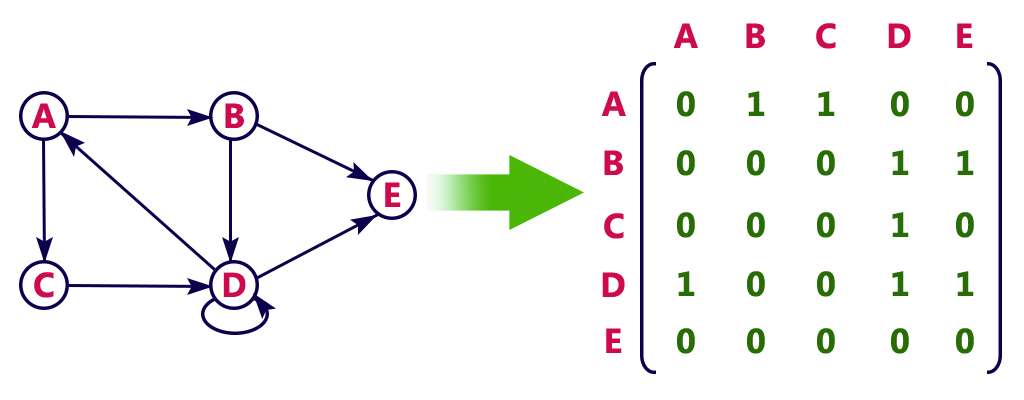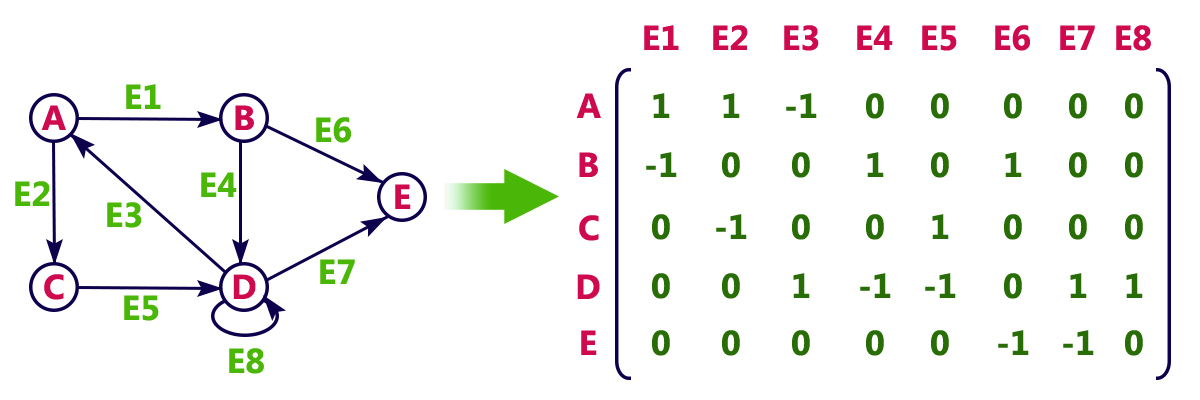Graph Representations
Graph data structure is represented using following representations...
- Adjacency Matrix
- Incidence Matrix
- Adjacency List
Adjacency Matrix
In this representation, the graph is represented using a matrix of size total number of vertices by a total number of vertices. That means a graph with 4 vertices is represented using a matrix of size 4X4. In this matrix, both rows and columns represent vertices. This matrix is filled with either 1 or 0. Here, 1 represents that there is an edge from row vertex to column vertex and 0 represents that there is no edge from row vertex to column vertex.
For example, consider the following undirected graph representation...

Directed graph representation...

Incidence Matrix
In this representation, the graph is represented using a matrix of size total number of vertices by a total number of edges. That means graph with 4 vertices and 6 edges is represented using a matrix of size 4X6. In this matrix, rows represent vertices and columns represents edges. This matrix is filled with 0 or 1 or -1. Here, 0 represents that the row edge is not connected to column vertex, 1 represents that the row edge is connected as the outgoing edge to column vertex and -1 represents that the row edge is connected as the incoming edge to column vertex.
For example, consider the following directed graph representation...

Adjacency List
In this representation, every vertex of a graph contains list of its adjacent vertices.
For example, consider the following directed graph representation implemented using linked list...

This representation can also be implemented using an array as follows..

